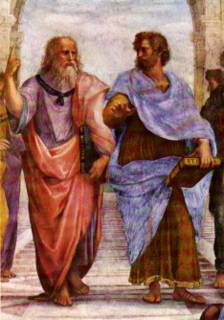Here, each arrow represents a symmetry breaking phase transition where matter changes form and the groups - G, H, SU(3), etc. - represent the different types of matter, specifically the symmetries that the matter exhibits and they are associated with the different fundamental forces of nature
With a distance measure in mind, the idea of a tree is to identify where something began, and ended? So you say that this interactive phase began and ended how?
So if one wants to keep it simplifed one would have had to identified the earlier known time, where conditions were permitted, which arose to entropic valuation, from that singular time? So lets call this beginning, "Plancktime"?
How things change, by simple rotations? It is always good to have "an image" in mind as you look at this topic presented with the perspective on puppies, instead of whether cats are alive or dead.
Schrödinger's cat is a famous illustration of the principle in quantum theory of superposition, proposed by Erwin Schrödinger in 1935. Schrödinger's cat serves to demonstrate the apparent conflict between what quantum theory tells us is true about the nature and behavior of matter on the microscopic level and what we observe to be true about the nature and behavior of matter on the macroscopic level.
While I had started out from a macroperspective, the idea is to put forward how we see around us right now? While I had isolated "the event" and "phase rotations" to a macroscopic valuation, the idea is to understand that this process holds true to the one at the quantum level as well. How so?
The complexity, arises from the resulting evidence we have about objects in space, yet, there is a real understanding about "how things came to be" at this time in the cosmo, and the relating value seen in the temperature now. Yet it is possible to create, the time back when the singuarity was not in the way we though it to be as some pea, but as a condition we might have applied to "zero being a superfluid state. Where are these conditions relevant?
Particle Indentification
So before I move on I wanted to relay some understanding about the intrinistic valuation of fundamental particles, and thought it better to draw attention to them while coming back to the issues of entanglement, as they arose from that simplier time.
Spooky action at a distance again?
Sure you have to start somewhere, and we know given "state of existance" is held in consideration? So you simplify, and entanglement seems relevant as Dick mentions to make something more complex. I would of quickly jumped to "spintronic idealizations" in his case, as well as understanding, we were moving towards complexity, in computer systemization.
Let's call it Plectics, by Murray Gellman
but without any commitment to the notion of "once" as in "simple" or to the notion of "together" as in "complex," the derived word "plectics" can cover both simplicity and complexity.
It is appropriate that plectics refers to entanglement or the lack thereof, since entanglement is a key feature of the way complexity arises out of simplicity, making our subject worth studying.
While we had been playing with these ideas many have speculate over time to make this spooky action idelized earlier on by einstein, to a more solid foundational transferance in communication. GHZ entanglement became much more complex over time as experimental testing moved it forward.
Practical Applications(27 Feb 2006 Wikipedia)
It is unknown as to whether or not Schrödinger actually owned a cat; it is known that this experiment was proposed as a purely theoretical experiment, and the machine proposed does not exist.

 PLato saids,"Look to the perfection of the heavens for truth," while Aristotle saids "look around you at what is, if you would know the truth" To Remember: Eskesthai
PLato saids,"Look to the perfection of the heavens for truth," while Aristotle saids "look around you at what is, if you would know the truth" To Remember: Eskesthai